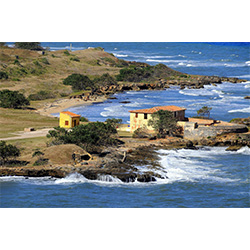LACS | Archaeology & Heritage Series | Unsettling Landscapes of the Cold War: The Cuban Missile Crisis in the intersection of Archaeology, Heritage, and Homelessness, Odlanyer Hernández de Lara

When:
Tuesday, May 23, 2023
12:30 PM - 2:00 PM CT
Where:
Online
Webcast Link
Audience: Faculty/Staff - Student - Public - Post Docs/Docs - Graduate Students
Cost: free
Contact:
Tiffany Williams-Cobleigh
(847) 491-7980
lacs@northwestern.edu
Group: Latin American and Caribbean Studies
Category: Academic, Lectures & Meetings, Multicultural & Diversity, Global & Civic Engagement
Description:
This presentation is part of the virtual lecture series Archaeology & Heritage, co-sponsored by the Evanston Public Library.
With Odlanyer Hernández de Lara (Syracuse University, Anthropology).
Description:
The Cold War was one of the main conflictive scenarios in a global scale from 20th century. In that context, 1962 became a complex year in the relations between the Union of Soviet Socialist Republics (USSR) and the United States of America (USA) when long range nuclear missiles that presented a high risk for the American national security were detected along several hidden military bases in Cuba. This event, named the Missile Crises or October Crisis, has been investigated from different perspectives, including archaeology in the last decade. Very diverse associated materiality is distributed across the whole island of Cuba as a result of the militarization of the territory during this period. Here, Hernandez de Lara focuses on the documentation of bunkers and trenches in the coastal landscape of Matanzas, Cuba, to discuss how archaeology and heritage contribute to the conversion of environmental erosion, sea level rise, and homelessness. Drawing from oral history, archaeological documentation, and 3D photogrammetry, he looks at an unsettling landscape in the national master narrative to provide a local perspective to a forgotten heritage at risk.
Bio:
Odlanyer Hernandez de Lara is a Cuban Archaeologist enrolled in the doctoral program at Syracuse University, where he is also a Part-Time Instructor of Anthropology. Additionally, he is an Associate Researcher at the Castillo de San Severino Museum of the Slavery Route in Cuba. He is the founder and director of Cuba Arqueológica journal. He has conducted archaeological research projects in Cuba, Argentina, and the United States for the past two decades, in both urban and rural contexts, including pre-colonial sites, coffee and sugar plantations, fortifications, and battlefields. He has published various books and articles. Among the most recent are the edited volumes: Arqueología en Campos de Batalla: América Latina en perspectiva (2020), and Fortificaciones de Matanzas (2019). He is currently conducting an archaeological project to examine violence, destruction, and memory in a detention and torture center during the Fulgencio Batista dictatorship in Cuba, between 1952 and 1958, and the materiality of conflict associated to the Cuban Missile Crisis.